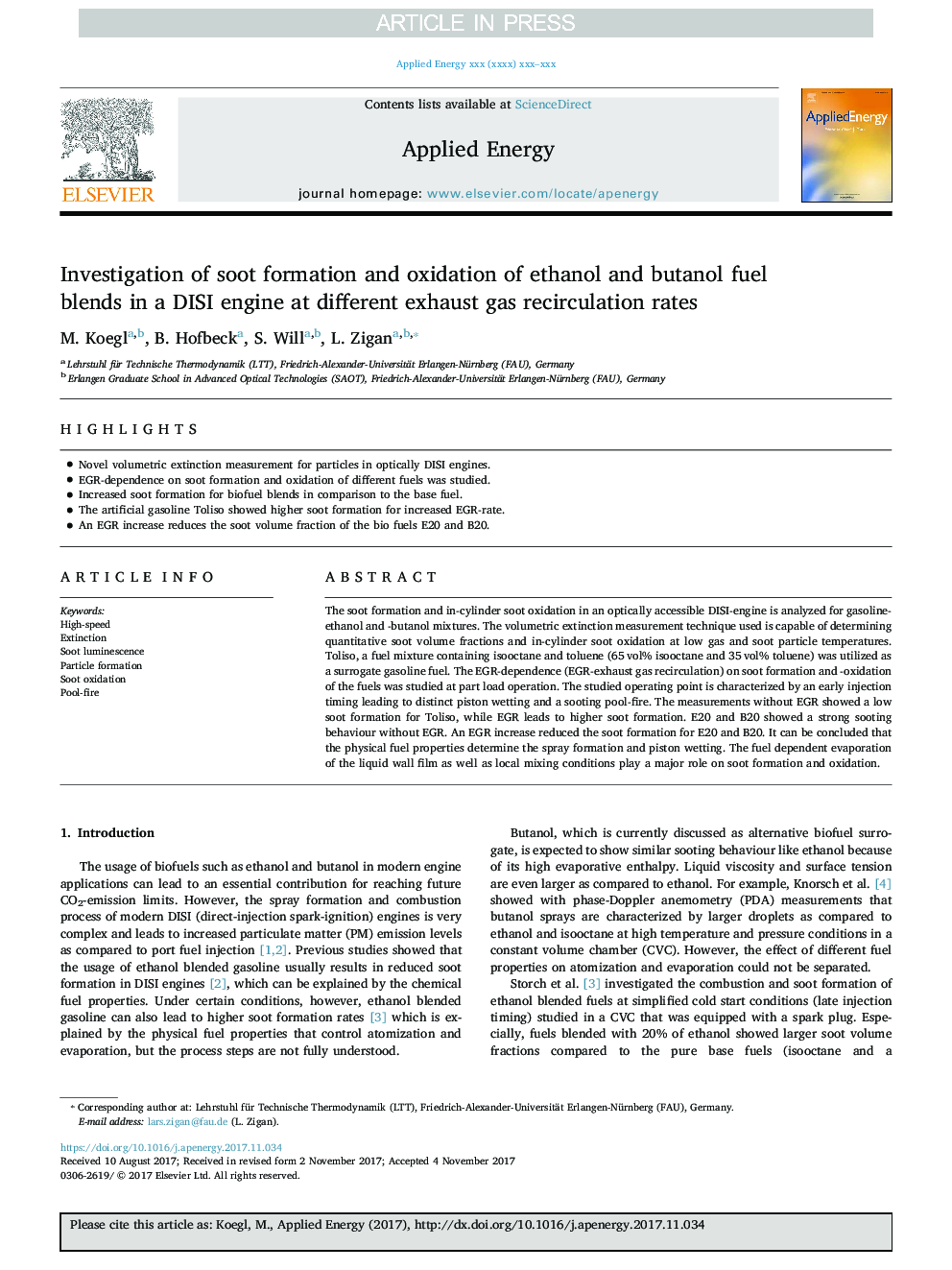| Article ID | Journal | Published Year | Pages | File Type |
|---|---|---|---|---|
| 6681575 | Applied Energy | 2018 | 9 Pages |
Abstract
The soot formation and in-cylinder soot oxidation in an optically accessible DISI-engine is analyzed for gasoline-ethanol and -butanol mixtures. The volumetric extinction measurement technique used is capable of determining quantitative soot volume fractions and in-cylinder soot oxidation at low gas and soot particle temperatures. Toliso, a fuel mixture containing isooctane and toluene (65â¯vol% isooctane and 35â¯vol% toluene) was utilized as a surrogate gasoline fuel. The EGR-dependence (EGR-exhaust gas recirculation) on soot formation and -oxidation of the fuels was studied at part load operation. The studied operating point is characterized by an early injection timing leading to distinct piston wetting and a sooting pool-fire. The measurements without EGR showed a low soot formation for Toliso, while EGR leads to higher soot formation. E20 and B20 showed a strong sooting behaviour without EGR. An EGR increase reduced the soot formation for E20 and B20. It can be concluded that the physical fuel properties determine the spray formation and piston wetting. The fuel dependent evaporation of the liquid wall film as well as local mixing conditions play a major role on soot formation and oxidation.
Related Topics
Physical Sciences and Engineering
Energy
Energy Engineering and Power Technology
Authors
M. Koegl, B. Hofbeck, S. Will, L. Zigan,
